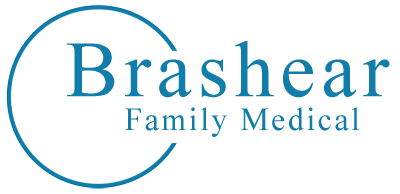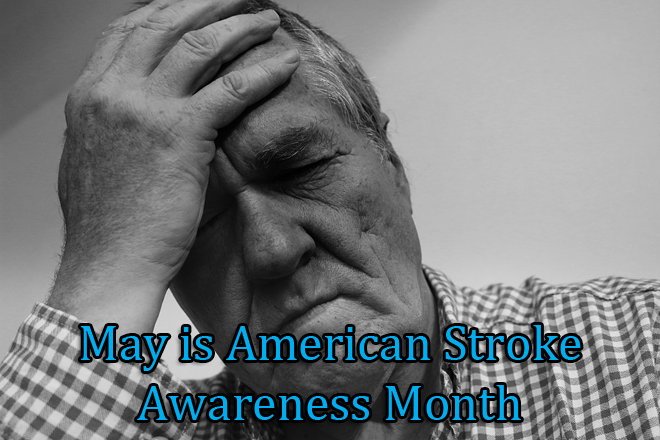Knowing the risk factors for stroke, signs and symptoms of stroke and what to do if you have symptoms of stroke is important to lessen the severity.
Stroke Awareness Month
Risk Factors for Stroke
High Blood Pressure
High blood pressure (hypertension) is the leading cause of stroke.
However, it is the most significant controllable risk factor.
Smoking
Smoking is another risk factor for stroke. It can damage blood vessels, leading to blockages within those blood vessels.
In addition, the use of birth control pills in conjunction with cigarette smoking can greatly increase the risk of stroke.
Diabetes
Having diabetes more than doubles your risk of stroke.
Many individuals with diabetes also have high blood pressure, high blood cholesterol and are overweight. This increases the risk of stroke even more.
High Blood Cholesterol
High blood cholesterol increase your risk of blocked arteries.
A stroke can occur if an artery leading to the brain becomes blocked.
Physical Inactivity and Obesity
Being inactive, obese, or both, can increase your risk of heart disease and stroke.
Excess body weight and obesity are linked to an increased risk of high blood pressure, diabetes, heart disease and stroke.
Carotid Artery Disease
The carotid arteries in your neck supply most of the blood to your brain.
Damage can occur to a carotid artery by a fatty buildup of plaque inside the artery. Therefore, this can cause the artery wall to become blocked by a blood clot.
Transient Ischemic Attacks (TIAs)
Recognizing and treating TIAs can reduce the risk of a major stroke.
TIAs produce stroke-like symptoms. However, most have no lasting effects.
Atrial Fibrillation (AFib) or Other Heart Disease
With AFib, the heart’s upper chambers quiver (similar to a bowl of gelatin) rather than beating in an organized, rhythmic way.
This can result in the blood to pool and clot and increase your risk of stroke.
Certain Blood Disorders
Clots are more likely if you have a high blood cell count.
Sickle cell anemia increases stroke risk because the “sickled” cells stick to blood vessel walls and may block arteries.
Excessive Alcohol Intake
Drinking an average of more than one drink per day for women or more than two drinks a day for men can raise blood pressure.
Sleep Apnea
Sleep disordered breathing contributes to your risk of stroke.
Signs and Symptoms of Stroke
- Severe headache
- Impairment or loss of function
- Memory loss
- Confusion
- Loss of balance or coordination
- Poor balance and dizziness
- Sudden numbness, paralysis or weakness of an arm, leg or side of the face
- Slurred or abnormal speech
- Loss of consciousness
- Incontinence
What to Do If You Have Symptoms of Stroke
Call 9-1-1 Immediately
If you observe any of symptoms of stroke, call 9-1-1 immediately.
Also, inform the 9-1-1 dispatcher if you believe you or someone you know is having a stroke.
Note the Time You Fist See Symptoms
If someone is having a stroke, our doctors can give a clot-busting medication called TPA, or tissue plasminogen activator. However, this has to be given within 4.5 hours of the start of symptoms.
Therefore, if you witness someone having a stroke, it is helpful to know when the symptoms began.
Perform CPR, If Necessary
Most stroke patients do not require CPR. If they don’t have a pulse, call 9-1-1 and start CPR while you are waiting for the ambulance to arrive.
If you are unsure, you can ask the 9-1-1 dispatcher to walk you through how to perform CPR.
Knowing what to do if you have symptoms of stroke is crucial for survival and recovery. Contact us with the link below for more information!

